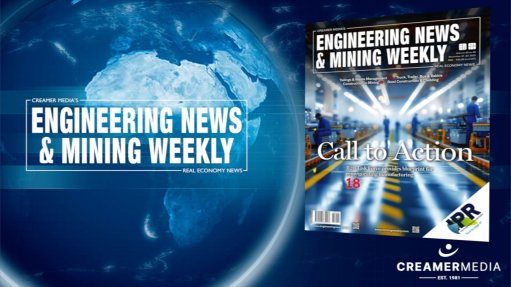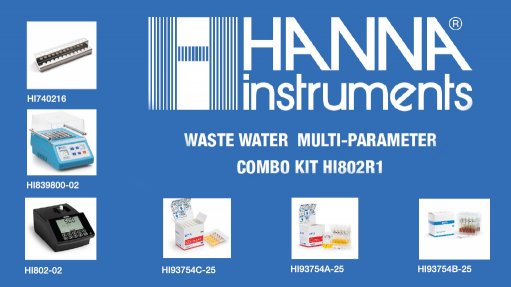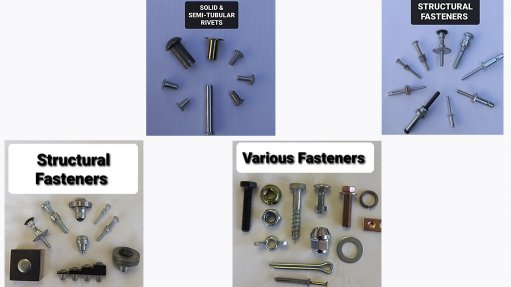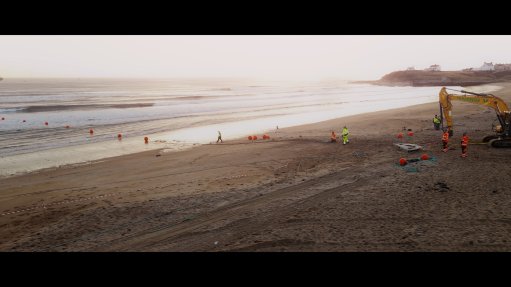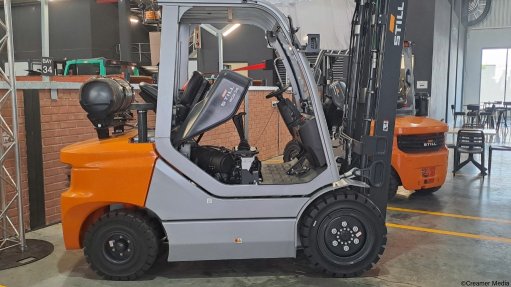Mining’s dormant gold analyser seen as potential gold optimiser with help of today’s tech

COMRO’s Legacy author Brian Protheroe interviewed by Mining Weekly's Martin Creamer. Video: Darlene Creamer.
For 30 years, 800 people at the now defunct Chamber of Mines Research Organisation (COMRO) devoted intense ongoing effort to research and development to advance mining in general and gold mining in particular.
However, during a period of very tight gold-price constraint, COMRO ceased to function in the form it had for three decades, at a time when a promising portable X-ray fluorescence instrument – a portable gold analyser – was entering the final stretch of its developmental journey.
The analyser provides the grade of gold in underground stopes. All one does is move the instrument across the rock face and it indicates the economic worth of the gold in it.
With the gold price and global technology both at all-time highs, South Africa’s gold mining industry is seen as having major additional revenue potential from the revival of what was intensively researched and developed but could not be seen through its last stretch to the finish line.
This has been highlighted by Brian Protheroe, author of the book COMRO’s Legacy.
“At the time, a number of industry members thought that it was an exceptional piece of equipment that had huge potential benefits,” Protheroe recalled in a Zoom video interview with Engineering News & Mining Weekly.
But today’s knowledge of it is far from being great and at a meeting Protheroe had at one of the gold mines the other day, young mining engineers were not even aware of the ruggedised gold-grade instrument, which was locally innovated by what was then one of the world’s largest privately funded mining research and development organisations.
“At the time, there was a fine balance between the gold price, the working cost of mining the gold, and the grade of the gold, which is the amount of gold in the rock being mined.
“The industry was unable to do a great deal about the very low gold price, which in the 80s and 90s was about $400/t, and it fluctuated greatly.
“Wanted was a more accurate, reliable and quick method of measuring the amount of gold in the reef being mined,” Protheroe reminisced.
To get one, COMRO formed a project team and collaborated with an international instrument manufacturer to develop the portable X-ray fluorescence instrument for rapid gold measurement.
The organisation tested prototypes in laboratory and field conditions and created procedures for analysing various gold, uranium, lead, iron, carbon, silica elements in the reef.
The instrument was made portable and computer compatible and the prototype showed promise, especially when it came to wide, low-grade reefs and those with coarse-grained gold. Grade estimates from the analyser closely matched traditional chip sample estimates, enabling management to avoid mining reef that had too little gold in it.
Engineering News & Mining Weekly: What was involved in the development and testing of prototypes?
Protheroe: We put a team of experts together in collaboration with an external equipment manufacturer, which was our way of undertaking research. We looked at what was available, and the route followed was looking at developing a portable X-ray fluorescence instrument. The four instruments produced were laboratory tested in simulated mining conditions over a long time and issues like intrinsic safety and radiation needed addressing. Field evaluation was extensive, with tests on gold, uranium, lead, carbon, and silica to obtain background X-ray fluorescence information to outline the gold, and a prototype was developed.
How was implementation and use in mines undertaken?
Because it was a new method of evaluating the grade of gold in the rock, they actually required a change in organisational structure in the traditional mining process. This involved doing in-situ analysis of the gold at the reef, which required revised work cycling on mines, the capture of information on the machine, which was able to scan the rock face. You took it along the face, scanned the face, and it captured the told information for downloading on surface. It was much quicker, and didn’t involve technical laboratory skills. But the background required the training of personnel, changing of communication lines. Quite a bit of mine organisation change was required to capture, interpret and enable management to take a decision about the value of continuing mining, for instance, because grade was everything.
What, in your view, should be the biggest takeaway?
An interesting thing that it proved when tested on mines was that it gave results comparable to the traditional methods of chip and assay sampling. Testing proved that it was a system that gave reliable, accurate, but also quick, information. What was interesting from the analysis by the mines is that they started sharing the information between them so that they could have a picture of what the reef looked like and how it should be sampled.
Not Commercialised
But, unfortunately, it was never commercialised. Some felt it was a bit too bulky. Today, while there are many X-ray fluorescence pieces of equipment available, they are not intrinsically safe for gold mining at depth. Highlighted as well by Protheroe are many other pieces of COMRO equipment that were not commercialised.
COMRO’s Legacy, published by the Southern African Institute of Mining and Metallurgy, is testimony to that, with Special Publications Series 13 alone covering more than 200 pages.
Article Enquiry
Email Article
Save Article
Feedback
To advertise email advertising@creamermedia.co.za or click here
Comments
Press Office
Announcements
What's On
Subscribe to improve your user experience...
Option 1 (equivalent of R125 a month):
Receive a weekly copy of Creamer Media's Engineering News & Mining Weekly magazine
(print copy for those in South Africa and e-magazine for those outside of South Africa)
Receive daily email newsletters
Access to full search results
Access archive of magazine back copies
Access to Projects in Progress
Access to ONE Research Report of your choice in PDF format
Option 2 (equivalent of R375 a month):
All benefits from Option 1
PLUS
Access to Creamer Media's Research Channel Africa for ALL Research Reports, in PDF format, on various industrial and mining sectors
including Electricity; Water; Energy Transition; Hydrogen; Roads, Rail and Ports; Coal; Gold; Platinum; Battery Metals; etc.
Already a subscriber?
Forgotten your password?
Receive weekly copy of Creamer Media's Engineering News & Mining Weekly magazine (print copy for those in South Africa and e-magazine for those outside of South Africa)
➕
Recieve daily email newsletters
➕
Access to full search results
➕
Access archive of magazine back copies
➕
Access to Projects in Progress
➕
Access to ONE Research Report of your choice in PDF format
RESEARCH CHANNEL AFRICA
R4500 (equivalent of R375 a month)
SUBSCRIBEAll benefits from Option 1
➕
Access to Creamer Media's Research Channel Africa for ALL Research Reports on various industrial and mining sectors, in PDF format, including on:
Electricity
➕
Water
➕
Energy Transition
➕
Hydrogen
➕
Roads, Rail and Ports
➕
Coal
➕
Gold
➕
Platinum
➕
Battery Metals
➕
etc.
Receive all benefits from Option 1 or Option 2 delivered to numerous people at your company
➕
Multiple User names and Passwords for simultaneous log-ins
➕
Intranet integration access to all in your organisation








